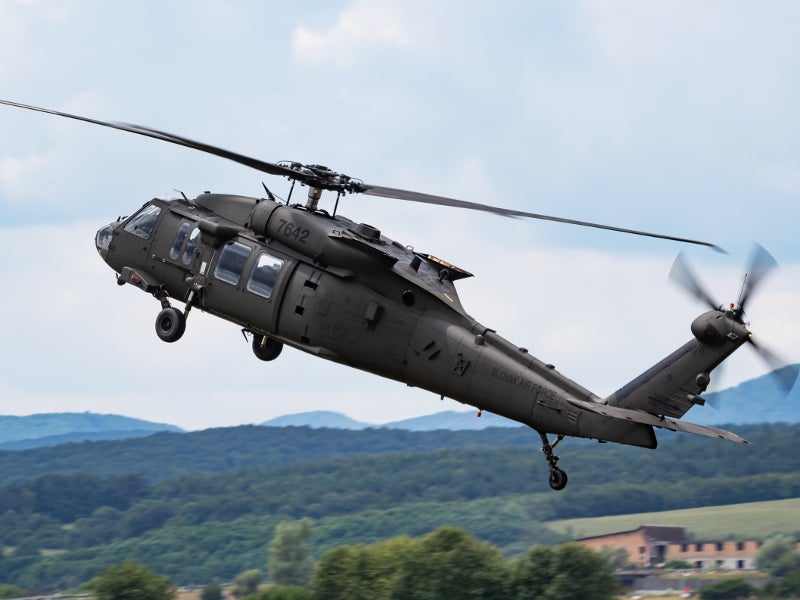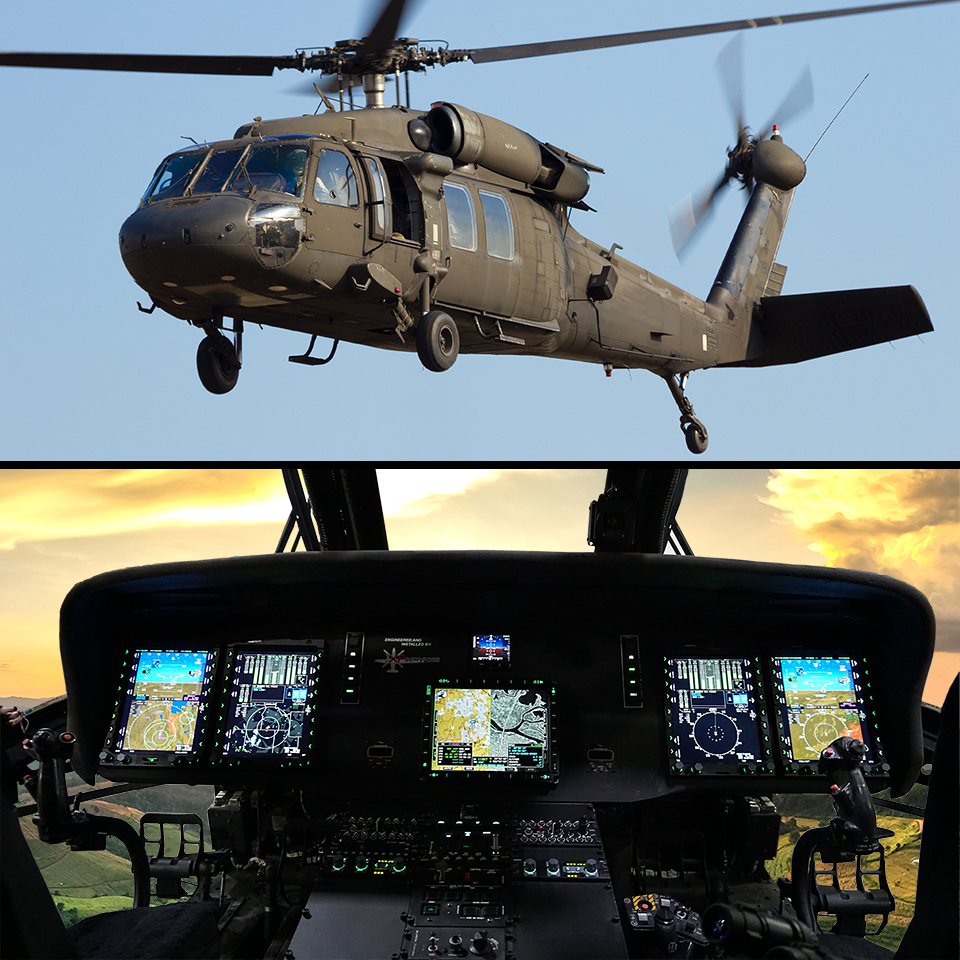UH-60 Blackhawk: A Trick Property in Tactical and Rescue Missions
Comprehensive Overview of the UH-60 Blackhawk Helicopter
The UH-60 Blackhawk helicopter, a trademark of modern-day army aviation, has played an indispensable role in diverse functional cinemas since its intro in the 1980s. As we discover its detailed history, design specifications, and technological improvements, it comes to be evident that the Blackhawk's influence prolongs much past the combat zone.
Background and Growth
The UH-60 Blackhawk helicopter has continually been a cornerstone of U.S. army aviation considering that its intro in the late 1970s. Developed by Sikorsky Aircraft, the Blackhawk was developed to fulfill the Military's need for a functional utility helicopter that could perform a range of missions in various environments. UH-60 Blackhawk. The development process started in 1972, with the initial model flying in 1974
Its functional launching came during the 1980s, where it was rapidly acknowledged for its rate, dexterity, and ability to transfer soldiers and freight efficiently. The Blackhawk's performance in the 1983 Grenada intrusion and succeeding operations solidified its credibility as a reputable workhorse for the U.S. Army. Over the years, the helicopter has actually undergone numerous upgrades and variants, adapting to progressing army demands, including the enhancement of advanced avionics and tool systems.

The Blackhawk's layout has additionally progressed to offer different branches of the army and allied forces, showcasing its adaptability. Today, it stays an essential part of U.S. armed forces procedures and continues to be a favored selection for rotary-wing air travel across the globe, mirroring its enduring legacy and recurring significance in modern warfare.
Layout and Specs
Engineered for performance and flexibility, the UH-60 Blackhawk helicopter features a robust style that improves its functional abilities. With a size of 64 feet and a blades size of 53 feet, the Blackhawk is created to suit a vast range of missions.
The helicopter is powered by 2 General Electric T700-GE-701C engines, each supplying 1,800 shaft horse power, which guarantees high levels of dependability and performance in diverse atmospheres. The rotor system is a four-blade, completely expressed layout that enables superb ability to move and security, also in damaging conditions.
Additionally, the UH-60 incorporates advanced avionics and flight control systems that improve situational understanding and pilot control. The cabin is developed for quick reconfiguration, allowing it to support numerous goal accounts, from army transportation to clinical emptying. Generally, the layout and requirements of the UH-60 Blackhawk show a dedication to functional quality and flexibility in the area.

Goals and functions
With its durable design and advanced capacities, the UH-60 Blackhawk helicopter offers a wide range of duties across different army operations. Originally created for army transport, the Blackhawk has advanced to carry out a large array of objectives, consisting of clinical discharge, search and rescue, and logistical assistance. Its adaptability enables it to run in varied settings, from city landscapes to rugged surfaces.
In combat circumstances, the Blackhawk is important for More about the author putting and drawing out special procedures pressures, providing them with the movement needed to perform their objectives properly. In addition, the helicopter can be furnished with advanced communication and avionics systems, enhancing its role as a command and control platform in dynamic combat situations.

Technological Improvements
Incorporating advanced modern technologies has substantially enhanced the performance and abilities of the UH-60 Blackhawk helicopter. The unification of advanced avionics systems, consisting of electronic flight control and improved situational understanding display screens, has enhanced pilot navigating and decision-making in intricate environments. These systems allow real-time information handling, facilitating better communication and sychronisation throughout goals.
Furthermore, the Blackhawk's airframe has gone through significant upgrades, making use of composite products that reduce weight while enhancing structural stability. This alteration adds to boosted fuel efficiency and operational range. The Continue helicopter is also geared up with sophisticated propulsion systems that give better power and integrity, ensuring ideal performance in diverse conditions.
Furthermore, the integration of modern sensing units and tool systems has actually broadened the Blackhawk's flexibility. Enhanced targeting capacities and progressed risk detection systems allow for reliable involvement in battle scenarios, boosting goal success prices.
Global Influence and Heritage
The UH-60 Blackhawk helicopter has made a profound influence on armed forces operations and altruistic efforts worldwide given that its intro in the late 1970s. Its flexibility and advanced modern technology have actually enabled it to offer in different roles, consisting of troop transport, clinical emptying, and logistical support (UH-60 Blackhawk). The helicopter's efficiency in battle scenarios has actually redefined aerial flexibility, enabling forces to react swiftly and efficiently to vibrant battleground problems
Internationally, the Blackhawk has been released in various conflicts, from the Persian Gulf to the Balkans, showcasing its flexibility to diverse settings. Its function in altruistic goals, such as catastrophe alleviation and search-and-rescue procedures, has further solidified its credibility as a dependable property in situation circumstances.
The legacy of the UH-60 prolongs past its army applications; it has also affected helicopter look at this now style and operational doctrine worldwide. Its success has triggered other countries to establish similar airplane, enhancing international air travel criteria and operational abilities. As the Blackhawk proceeds to progress with modern-day upgrades, its influence on both civilian and armed forces aeronautics continues to be significant, guaranteeing its place in history as one of one of the most iconic helicopters of its time.
Verdict
The UH-60 Blackhawk helicopter stands as a testimony to ingenious design and versatile armed forces application. Its design and capabilities have significantly designed modern-day aerial operations, improving troop wheelchair and operational efficiency. The recurring innovations in innovation remain to solidify the Blackhawk's duty in contemporary warfare and humanitarian initiatives. As an outcome, the Blackhawk has actually left an indelible mark on military aviation, influencing future helicopter layouts and redefining tactical techniques around the world.
The UH-60 Blackhawk helicopter, a characteristic of modern armed forces aviation, has actually played a crucial role in diverse operational cinemas since its introduction in the 1980s - UH-60 Blackhawk.The UH-60 Blackhawk helicopter has consistently been a keystone of United state armed forces aviation since its introduction in the late 1970s.Engineered for performance and versatility, the UH-60 Blackhawk helicopter features a robust design that improves its operational abilities.With its robust layout and progressed abilities, the UH-60 Blackhawk helicopter serves a wide range of roles throughout numerous army procedures.The UH-60 Blackhawk helicopter has actually made an extensive effect on military operations and altruistic initiatives worldwide since its introduction in the late 1970s